Latin name: Armeria
Category: perennial herbaceous plants
Origin: South and North America, North Africa, Europe, Asia
Armeria – exquisite showiness of a romantic queen
Summer time is considered not only the hottest and most laborious period among amateur gardeners, but also a unique highlight of acquaintance and getting positive emotions from the lush flowering of vegetation. Indeed, in the summer a huge number of garden crops bloom, transforming and delighting their owners with their unusual shapes, sizes and colors.
The duration of the flowering parade of various plants is completely different. Some bloom and have a short period of their splendor, while others bloom throughout the summer. With the help of these exotics, gardeners decorate the garden with unique compositions.
Such garden plants include carnation, salvia, sage, geranium, phlox, lavatera, delphinium, Zantedeschia.
The unpretentious plant armeria in landscape design enjoys special attention. The extraordinary brightness of these colors is undeniable. They are real stars that transform flower beds, garden paths, mixborders, flower beds, rock gardens, rocky compositions.
Armeria (Armeria) – a unique genus composed of herbaceous flowering perennials in the Plumbaginaceae family. This community includes ninety varieties of diverse cultures.
Biologists are considering two interpretations of this interesting flower name. Armeria is very similar to cloves. These external data were reflected in her name. The French phrase "armoires" can be translated from Old French as a bearded carnation.
The second version of the name "armeria" is borrowed from the Celtic language. If you add two words "ag", which means "near, close", and "mor" – the sea. Presumably, this interpretation of the name is given due to some varieties of armeria, which ennoble the seaside dunes with their presence.
The natural conditions of the Mediterranean, America, Eastern Europe, Asia are native to the armeria flower.
Here the culture grows with dense grassy turfs, and thin flower stalks with bright inflorescences in the form of extraordinary balls are brought up.
She likes mountainous slopes located near the sea coast.
External special indicators of army
In cultural cultivation, the armeria flower has been grown since one thousand seven hundred and sixty-eight. This vegetation is represented by small perennial shrubs, which can be represented by dense thirty-centimeter pillows with a height of fifteen to sixty centimeters.
The roots of the plant are short rod. It has a straight stem, which has a smooth or pubescent surface. The basal rosette is made up of a huge number of lanceolate-linear leaves, the length of which can reach fifteen centimeters and a width of three millimeters.
The flowering bush is decorated with small small flowers and buds, which organize inflorescences of capitate, axillary orientation. They are white, pale pink, purple.
Armeria varieties and varieties
Seaside Armeria (Armeria Maritima)
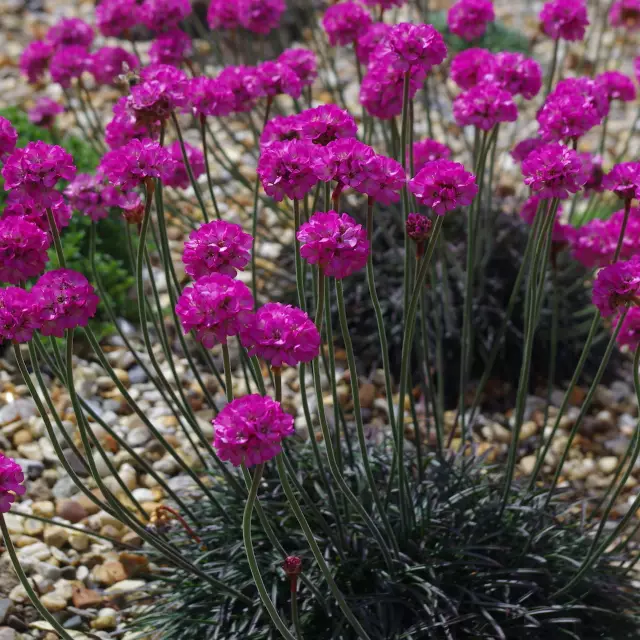 This ornamental perennial vegetation with a modest size has chic inflorescences that can compete with the best flowering shrubs in the summer, such as Euonymus, Skumpia, Chubushnik, Azalea and many other exotics.
This ornamental perennial vegetation with a modest size has chic inflorescences that can compete with the best flowering shrubs in the summer, such as Euonymus, Skumpia, Chubushnik, Azalea and many other exotics.
In natural nature, this culture can be contemplated near the sea coast. Armeria pink is endowed with expressive and elegant flowers, grouped in extraordinary balls. They are presented with long peduncles and look like floating spheres.
Sea armeria blooms throughout the summer period.
This perennial armeria has the appearance of pillow-shaped shrubs, no more than twenty centimeters high. The bushes are made up of narrow flat leaves of a greenish-blue color, their configuration is linear.
This variety is rich in its interesting cultivated varieties:
Armeria Louisiana – The beauty of this variety comes from delicate pink flowers.
Bloodstone or Dusseldorf Stolz – this variety is represented by dark red flowers.
Vindictive – the scarlet color of the balls ennobles these bushes.
Alpine Armeria
 This perennial armeria creates plump fifteen-centimeter pillows.
This perennial armeria creates plump fifteen-centimeter pillows.
The leaves have a lanceolate-linear configuration; they are not afraid of winter coolness. Thirty-centimeter peduncles are decorated with inflorescences – balls collected with pale pink flowers.
Armeria in the garden can form beautiful rugs and bloom throughout the summer. It is often planted in rock gardens, on lawns, borders, discounts. Group plantings next to sedum, fern will look wonderful.
At the Alpine army there are very original varieties:
Armeria Alba – the inflorescences of this variety are snow-white in color.
Rosea – colorful pink flowers on the bushes look charming.
Laucheana – is an interesting variety with reddish carmine flowers.
Armeria Mozhzhevelovolistnaya or soddy armeria (Armeria Cespitosa, Armeria Juniperifolia)
 Perennial armeria soddy has descended to amateur flower growers from the Pyrenees mountain system, which is considered its native area. Under natural conditions, the vegetation is represented by continuous low thickets, over which during the flowering period there are many inflorescences-balls, composed of pink or red flowers. This floral rug pleases those present for two months.
Perennial armeria soddy has descended to amateur flower growers from the Pyrenees mountain system, which is considered its native area. Under natural conditions, the vegetation is represented by continuous low thickets, over which during the flowering period there are many inflorescences-balls, composed of pink or red flowers. This floral rug pleases those present for two months.
The juniper-leaved armeria looks great when organizing landscape design, mini-rock gardens and portable rock gardens look especially colorful with the presence of armeria.
Demanding armeria soddy wants to grow in light partial shade, does not forgive too wet soil and winter frosts – warming is required.
Interesting varieties that are in demand among flower growers are:
Armeria "Zunderman" – soddy and seaside armeria became the prototypes of this hybrid variety.
Armeria Brno – the uniqueness of the undersized variety lies in its chic terry lilac flowers.
Armeria Bivenz Verajeti – distinguished by light pink double flowers.
Armeria the Beautiful (Armeria Formosa)
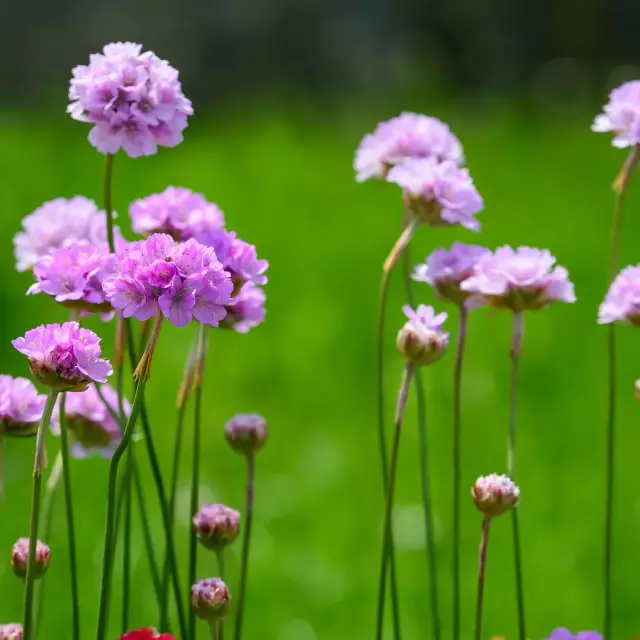 It is the most colorful variety of armeria. Graceful sockets are collected by evergreen narrow leaves. The lushly blooming armeria, beautiful with its presence, will decorate the backyard during the warm off-season. The color scheme of inflorescences is varied. They are pink, white or red.
It is the most colorful variety of armeria. Graceful sockets are collected by evergreen narrow leaves. The lushly blooming armeria, beautiful with its presence, will decorate the backyard during the warm off-season. The color scheme of inflorescences is varied. They are pink, white or red.
With the help of white armeria, flower beds are decorated.
Armeria Ordinary (Armeria Vulgaris)
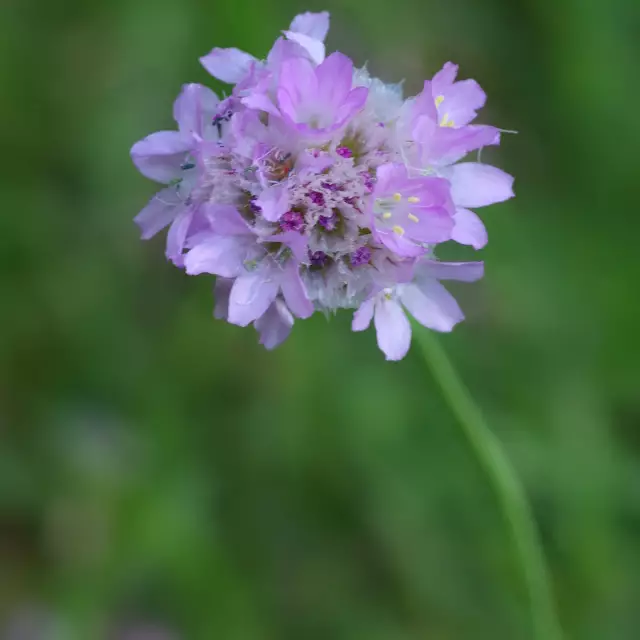 This tall variety can reach a height of about sixty centimeters. In a single-cut configuration, the leaves can reach a length of just over 12 cm, and they are only one centimeter wide. Long naked peduncles present unique spherical inflorescences, which are collected from fragrant flowers of pinkish-carmine color. Each bush can accommodate up to forty inflorescences.
This tall variety can reach a height of about sixty centimeters. In a single-cut configuration, the leaves can reach a length of just over 12 cm, and they are only one centimeter wide. Long naked peduncles present unique spherical inflorescences, which are collected from fragrant flowers of pinkish-carmine color. Each bush can accommodate up to forty inflorescences.
Armeria Broadleaf (Armeria Latifolia)
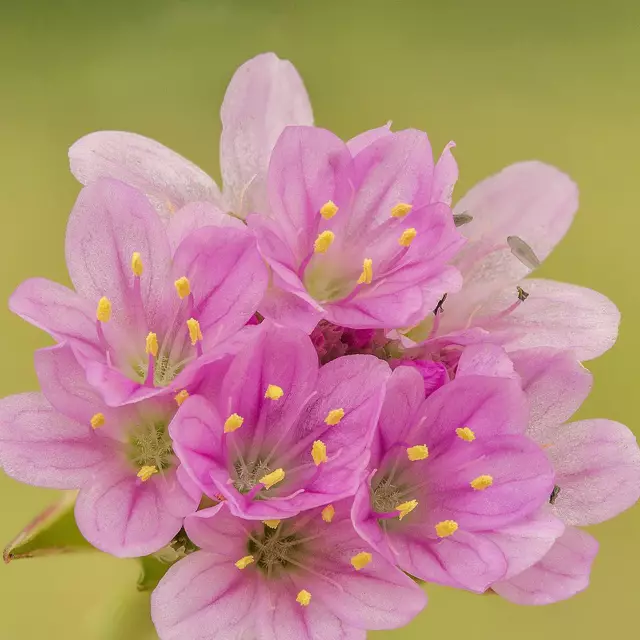 A compact variety of armeria is represented by chic dense green cushions. This beauty is formed by basal rosette leaves. A lot of high up to 50 cm peduncles are decorated with large flowers of white or pinkish colors, organized in capitate inflorescences.
A compact variety of armeria is represented by chic dense green cushions. This beauty is formed by basal rosette leaves. A lot of high up to 50 cm peduncles are decorated with large flowers of white or pinkish colors, organized in capitate inflorescences.
Armeria Red
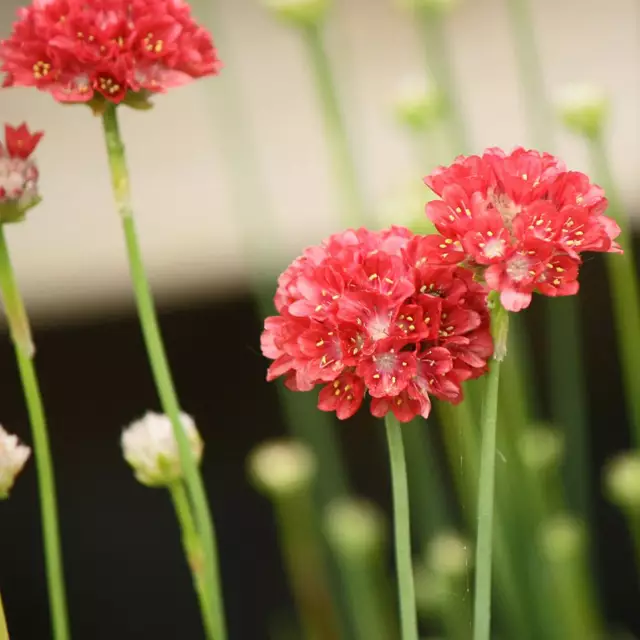 The perennial variety has fragile stems and green leaves, reaches a height of more than 30 cm. When flowering, it acquires elegant luxurious coral-colored inflorescences, which can be imagined as bright fluffy, hovering above the soil surface. A wonderful unpretentious species prefers sunny areas of the garden plot, where the flowering period continues throughout the summer.
The perennial variety has fragile stems and green leaves, reaches a height of more than 30 cm. When flowering, it acquires elegant luxurious coral-colored inflorescences, which can be imagined as bright fluffy, hovering above the soil surface. A wonderful unpretentious species prefers sunny areas of the garden plot, where the flowering period continues throughout the summer.
Dry winter bouquets with long peduncles of red armeria in combination with other flowers look charming. They are cut off unblown and dried.
How to grow armeria from seeds
Gorgeous vegetation from seeds can be obtained in two ways:
- growing seedlings;
- sowing seeds in open ground.
To obtain abundant germination, the seeds must be properly prepared, both for planting in open ground and for seedlings:
- for seven days, the seeds are kept in the refrigerator;
- on the eve of sowing, the seeds are soaked for nine hours in lukewarm water, it is advisable to add "Zircon" or another preparation.
Planting armeria for seedlings
Seeds are sown in low boxes with prepared soil no deeper than two centimeters.
Containers should be located in a warm, bright place. When two leaves appear in the seedlings, they can be planted in individual flowerpots or in a greenhouse for further growth.
Ready strong sprouts can be planted on a personal plot, with the exception of the appearance of frost.
The choice of location is of no small importance when growing perennial armeria.
The armeria flower prefers to grow in well-lit areas of the backyard plot, well-lit by the sun. She is not afraid of short dry periods.
Shady areas are not very comfortable for this garden culture. The leaves of the shrub will be pale, the stems will be elongated, and the flowering will be poor.
Nature, as it were, created these masterpieces to decorate the slopes, on which bright sunlight regularly lingers. Armeria will look great on alpine slides or flower beds near water bodies.
The southern sides of the site will be the most comfortable areas for armeria in the garden.
By the onset of winter, the bushes must be covered so that snow and excess moisture do not fall on them.
The soil
For a comfortable and pleasant growth, an armeria flower must be provided with light sandy or rocky soil, its reaction should be acidic.
If in the If there is an excess of lime compounds, this must be corrected by adding ammonium nitrate or treating it with acetic acid.
The main thing is that stagnation of moisture in the soil should not be allowed – this threatens the disease of the armeria, it may even die.
Proper care of armeria
The main completely simple moments of getting a chic armeria in the garden can be distinguished:
- timely top dressing of a plant;
- high-quality watering;
- regular weeding of the site,
- relocation of the army every five years to a new territory.
Following these rules will allow the bushes to be extremely decorative and delight their owners with abundant exotic flowers.
Watering
This wonderful vegetation is extremely drought-resistant. Often it is not advisable to water it. For a comfortable state of the flower, slightly moisten the soil.
If the summer is rainy, the bushes must be provided with drainage trenches to drain excess water.
Top dressing
Like any plant in the garden, armeria will not refuse top dressing with liquid mineral fertilizers during the growing season and in the fall. After all, this procedure is directly related to how long the armeria blooms. If there are not enough nutrients in the soil, flowering will be poor.
Pruning armeria
The procedure for periodic pruning after the flowering period is also a prerequisite for growing this crop. Your armeria in the garden will not only look gorgeous, but will also be able to get trained and gain strength before the next flowering period.
When preparing for winter, the armeria should not have damaged and dry leaves - it is advisable to remove them.
Armeria in winter
This vegetation is frost tolerant. If, of course, there is little snow in winter, then the bushes want warming. Shrubs of turfy armeria especially require shelter. For this procedure, dry peat, spruce branches and non-woven material are suitable.
Reproduction of armeria
Obtaining young specimens of armeria with seeds and seedlings has already been considered. You can perfectly propagate the plant:
Cuttings. We separate part of the basal rosette and sprinkle it with a layer of soil. We create conditions for the greenhouse effect for better survival.
Bush section. For this procedure, a three-year-old plant is used. The excavated bush is divided into parts. We get rid of damaged areas of roots and stems. Planted in prepared holes at a distance of about thirty centimeters.
Pests and diseases of armeria
All varieties of armeria are not afraid of insects and diseases, provided that the care is well done.
The most unpleasant pest for armeria is the aphid, which likes the juice of the leaves. You can get rid of uninvited guests or prevent their appearance with the help of insecticidal preparations. It is necessary to process the trunks and leaves with Inta-Vir or Kinmiks.
When diseases appear, armeria must be urgently saved.
If the leaves and stems are covered with dark brown, brownish-yellow, black spots, the armeria flower and the soil around it should preferably be treated with fungicides.
Rot may form on the armeria bush. Waterlogging of the soil may be the cause of this misunderstanding.
Why is armeria not growing? The following factors must be excluded: the soil should not be alkaline. Watering is done only during hot periods. There should be no stagnant phenomena in the soil. Armeria is planted in the garden either with the onset of spring or in the autumn.
Armeria is a wonderful vegetation for the garden. The huge variety of its varieties allows gardeners to fantasize about its use with their data. The universality of culture is manifested in various colors, the duration of the flowering period and its unpretentious qualities. All this beauty fits perfectly into rock gardens, rocky gardens.
The garden plot will be transformed with the presence of an army on it, especially in the company of Cercis, Exochord, Skimia, Kraspedia, Pandanus.
Many interesting plants can be found if you open the catalog of garden plants alphabetically on the site.




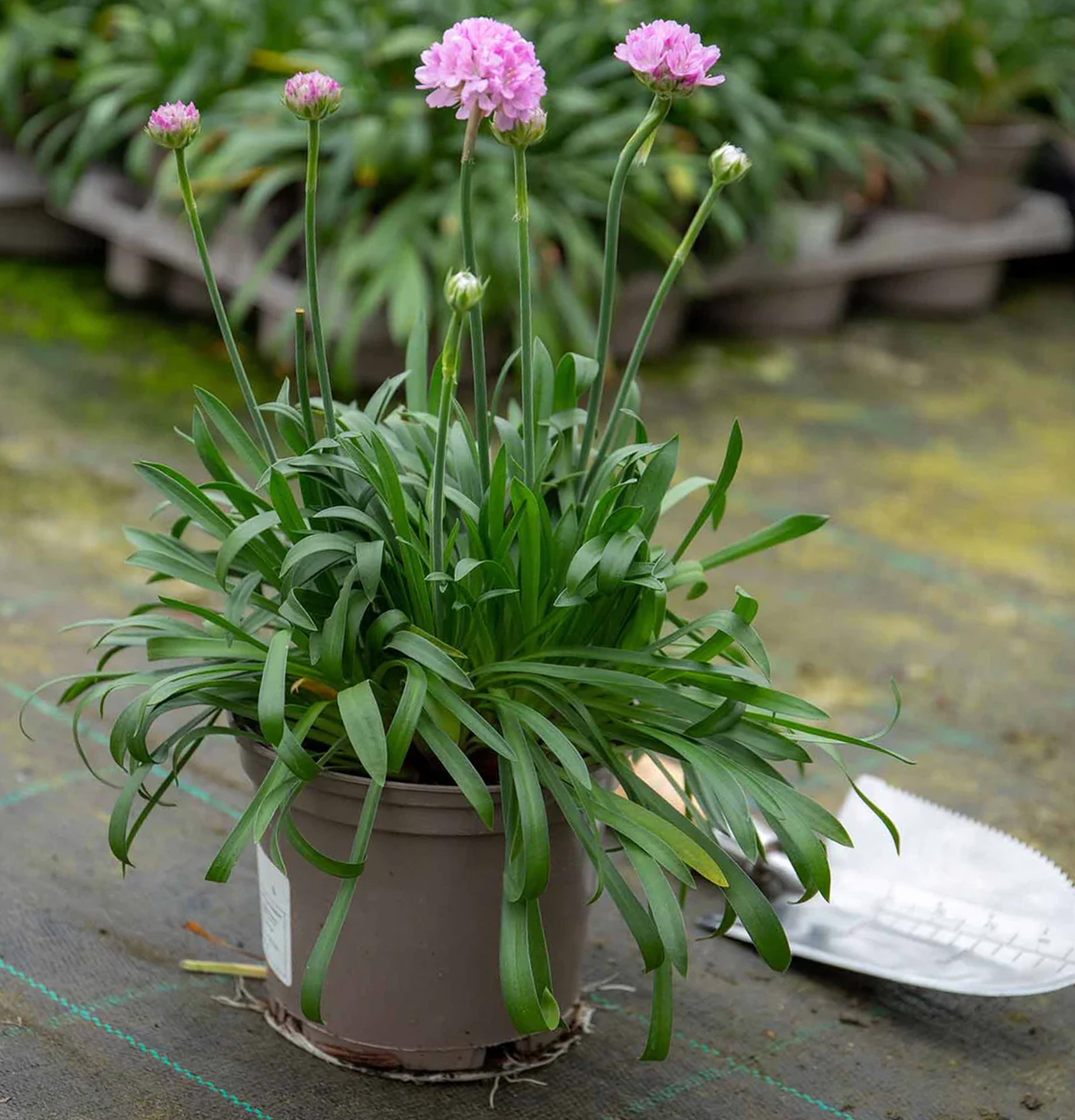










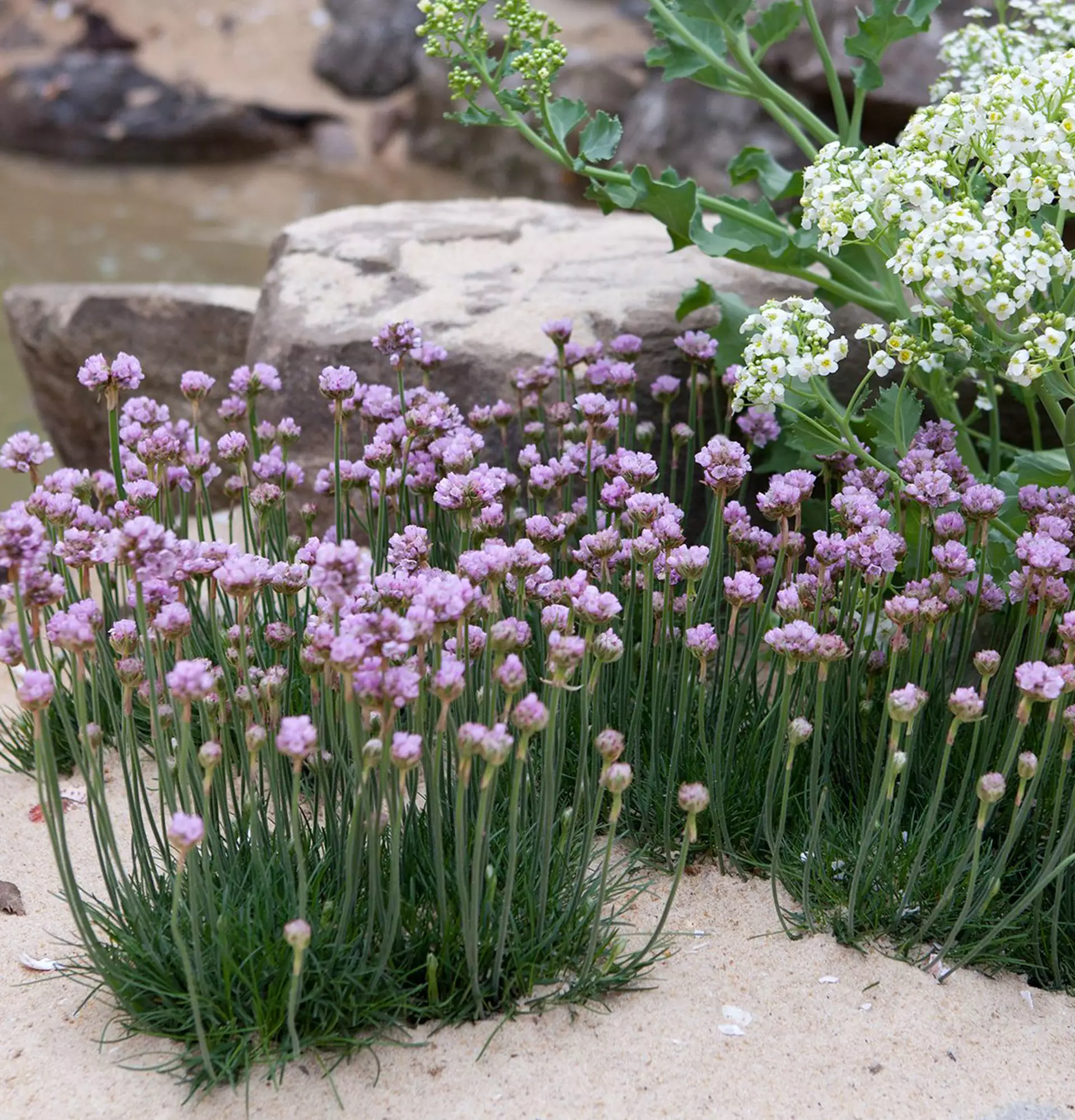
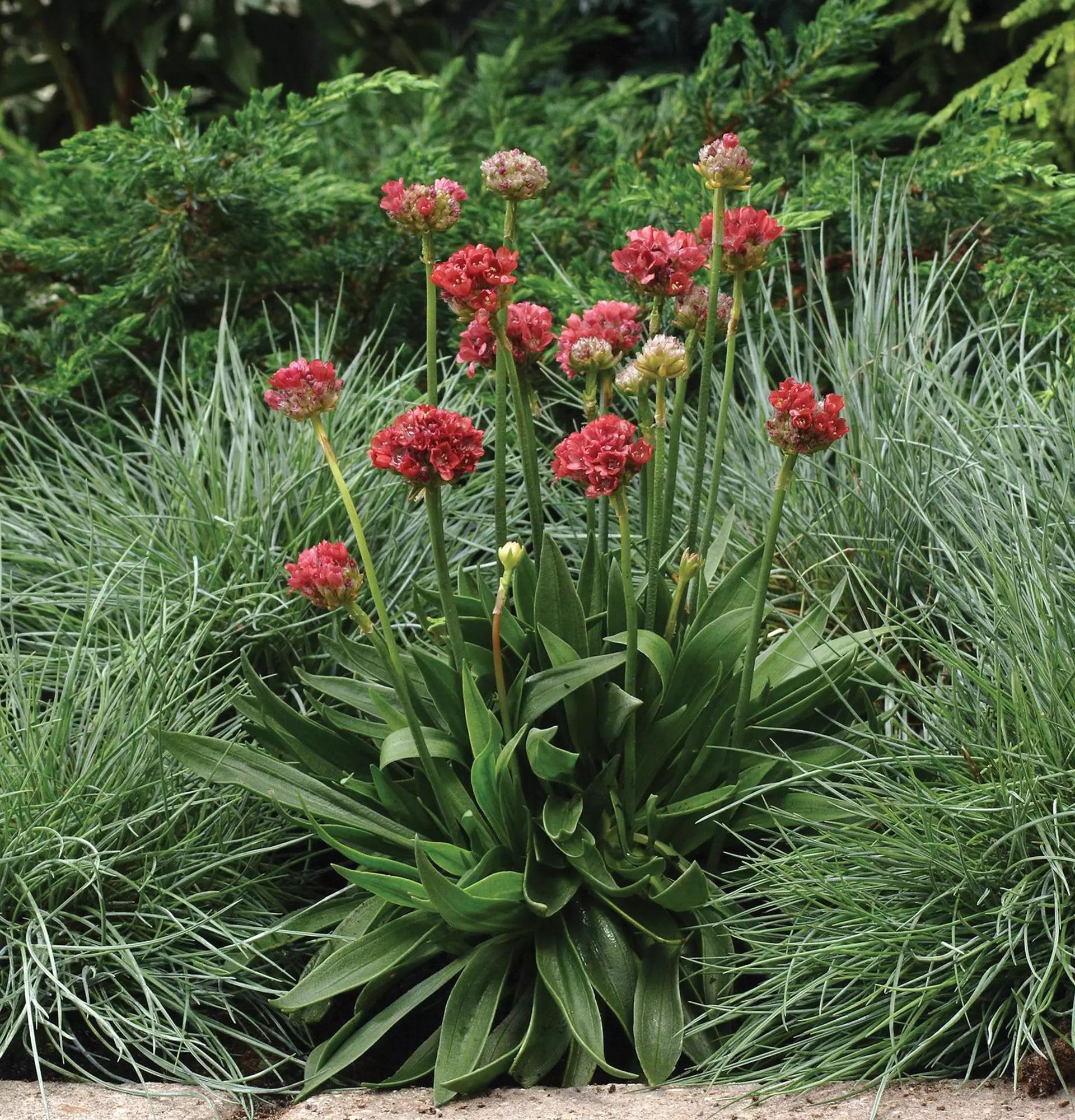
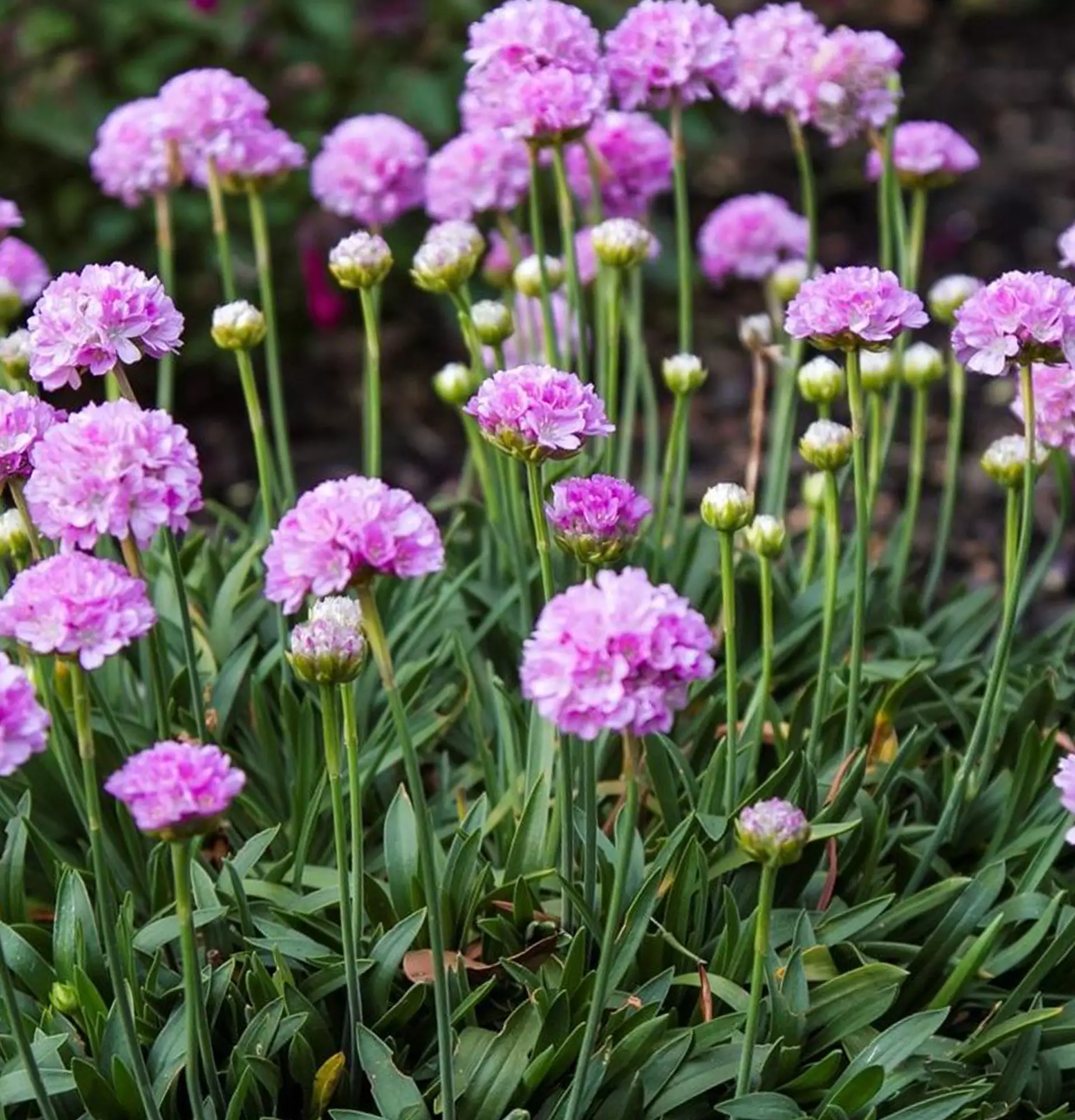
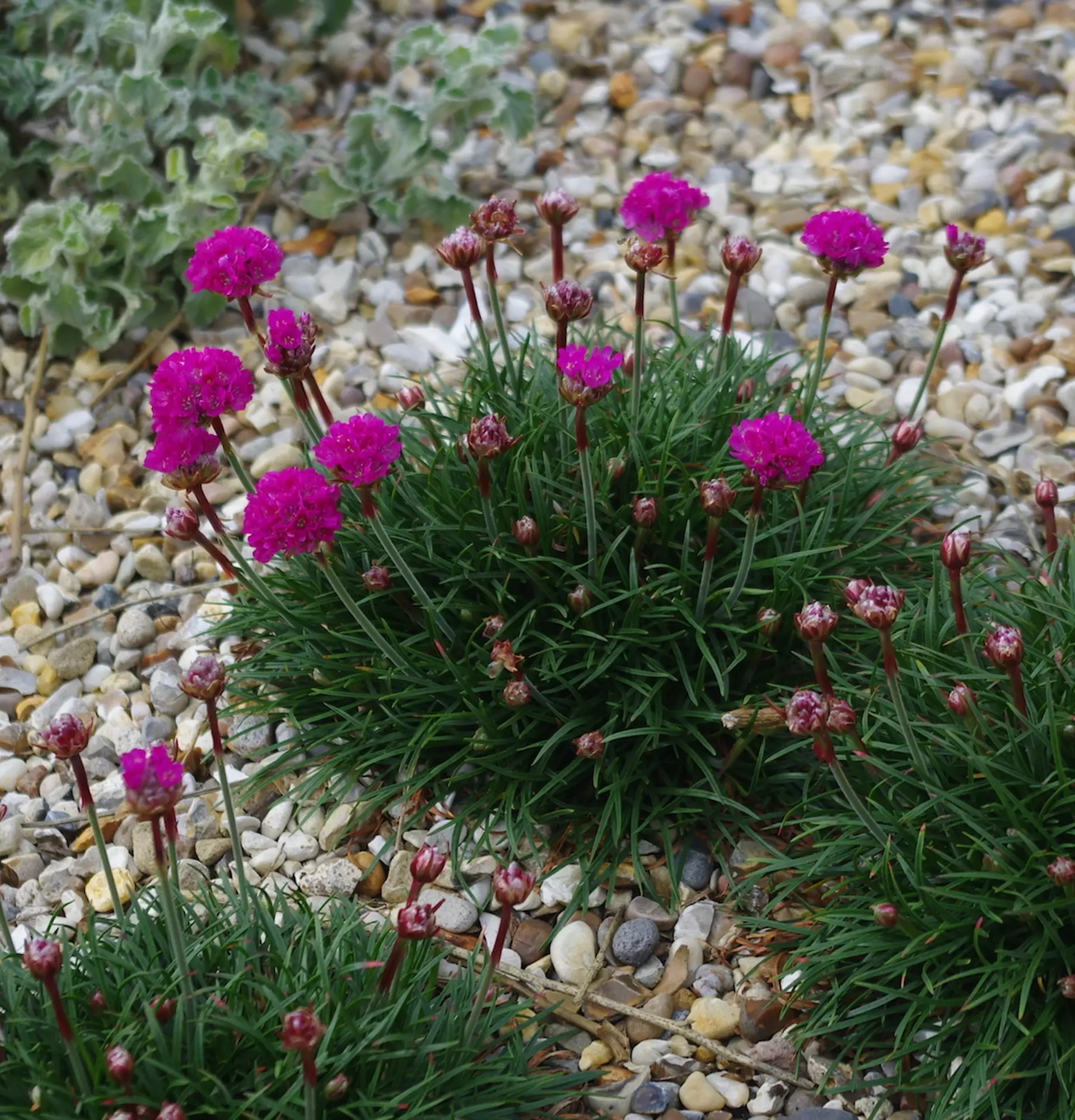
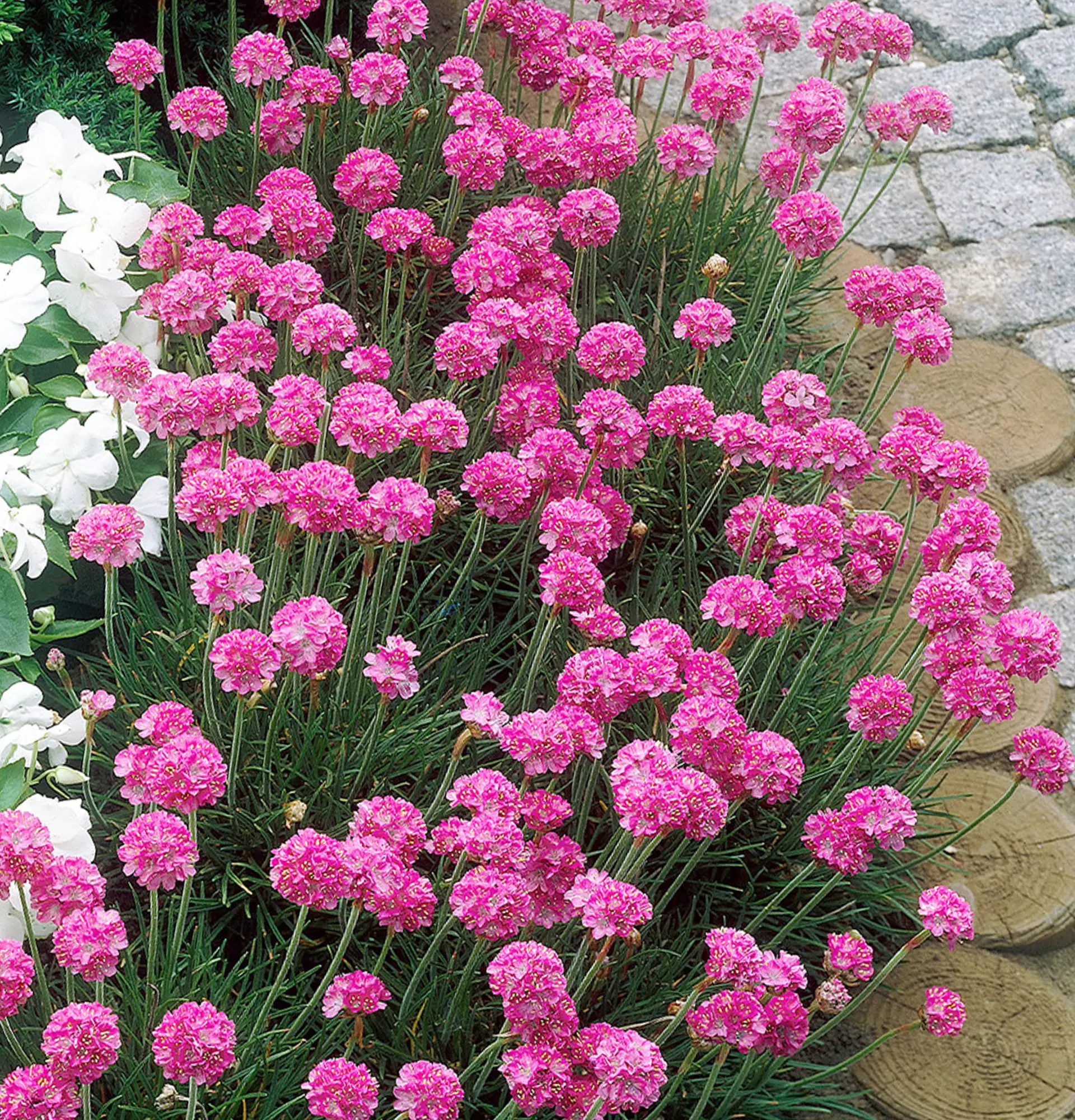
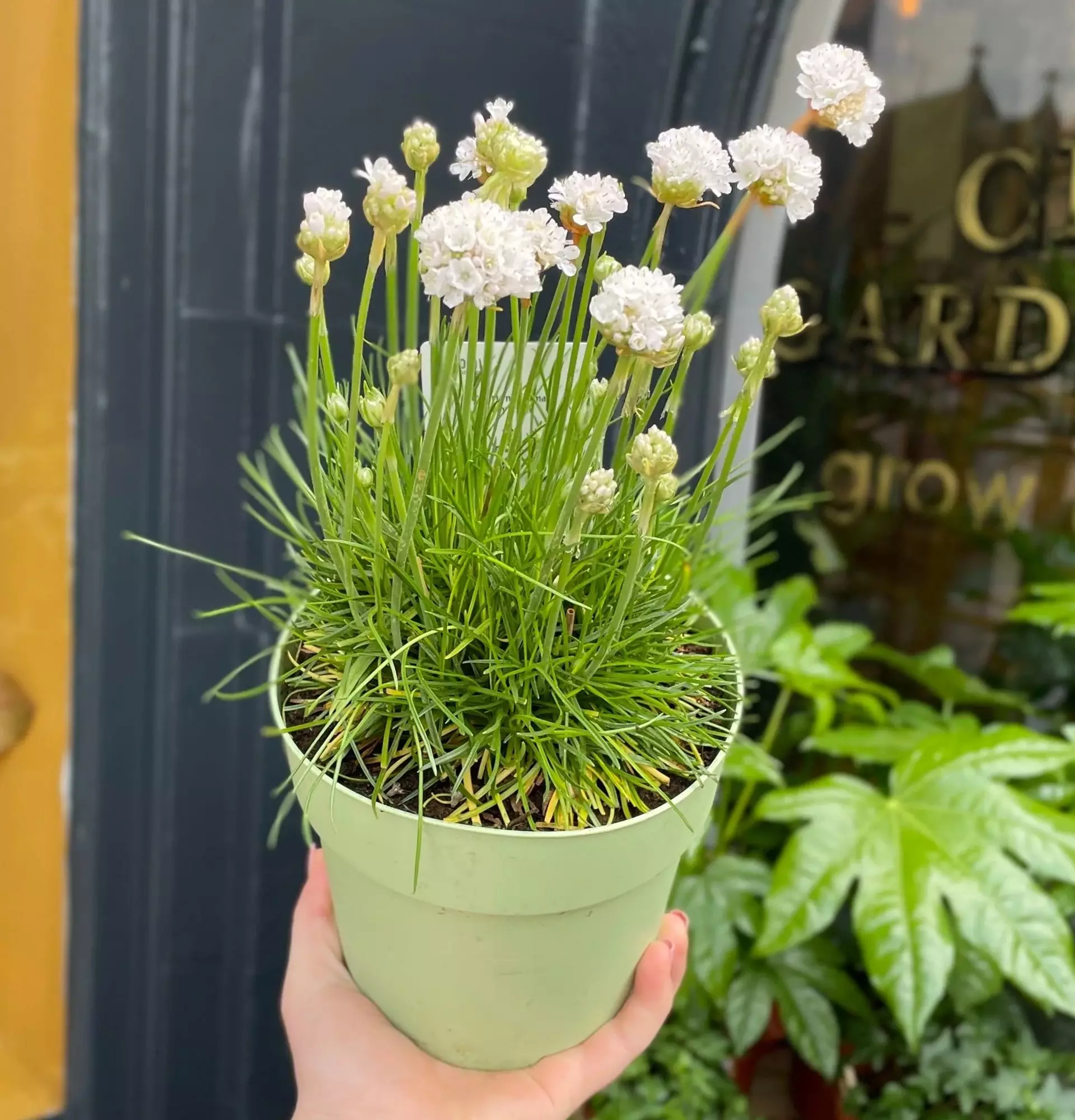
Write comments
Comments